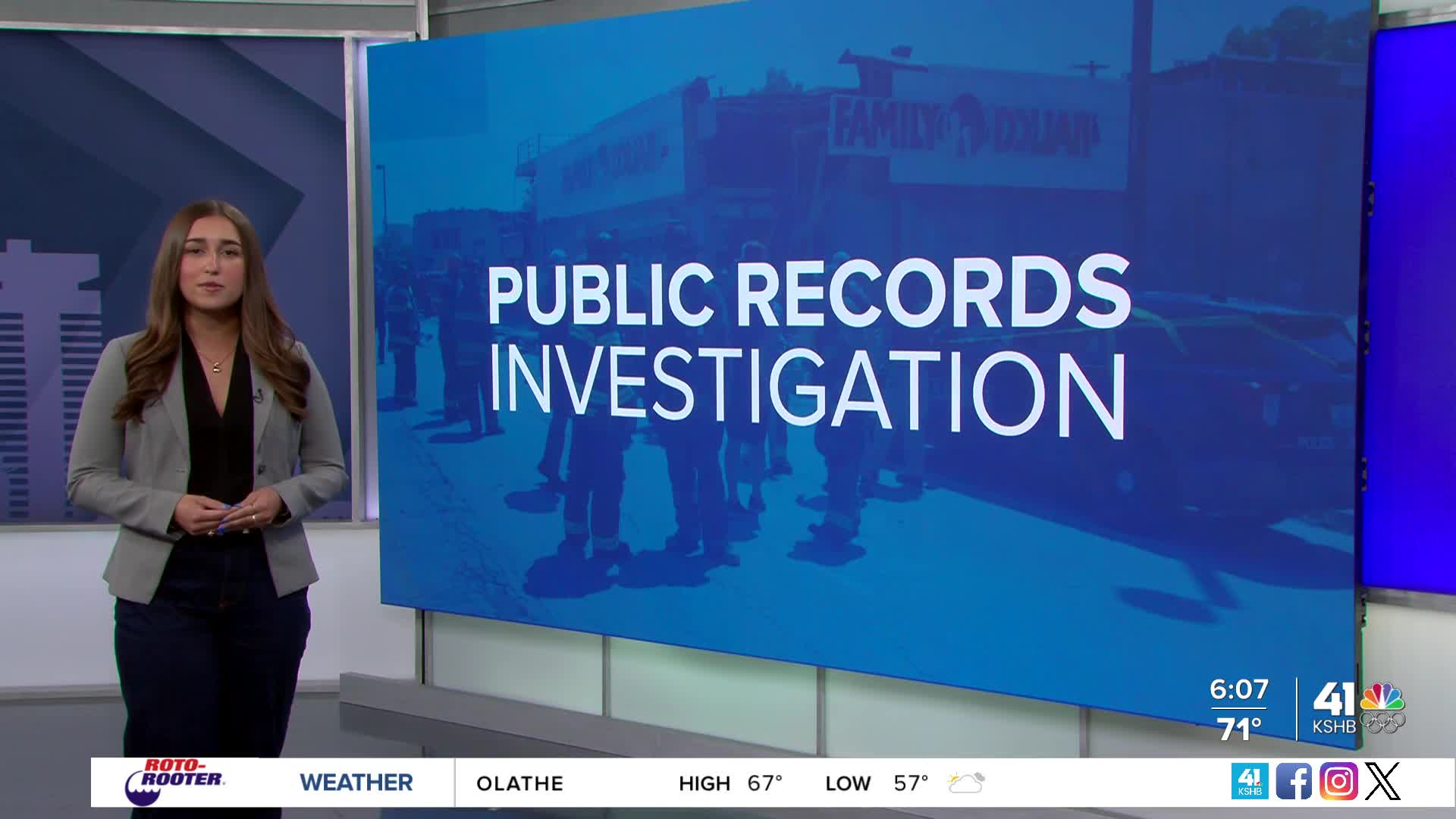KSHB 41's Elyse Schoenig has been covering the deadly Family Dollar building collapse ever since it happened in July. She filed public records requests to help report this story. You can share your story idea with Elyse via e-mail.
Public records obtained this month by KSHB 41 News reveal concerns over staffing and case backlogs in the Kansas City, Missouri, department tasked with investigating dangerous building reports.
On Sunday, July 27, Larry Banks had just walked outside of the Family Dollar store at 3726 Broadway when parts of the building's roof collapsed. Banks would not survive his injuries from the collapse, which left three other people injured.
"I felt so much for the people that were trapped in there, there was nothing I could do,” neighbor Victor Scott said the day of the collapse.
City officials have placed blame on the building’s owner, who did not replace a support beam after a car crashed into the corner of the building in 2016.
“Anytime a tragedy like this occurs that that appears to be preventable, you know, I think that we should hold accountable property owners and business owners who threaten the lives of our citizens,” KCMO Councilmember Eric Bunch said days after the collapse.
KSHB 41 has been working ever since to learn more context about the story through public records.
A particular focus for reporter Elyse Schoenig has been to learn more about the city's Dangerous Buildings division. Staff in the division were asked to inspect the Family Dollar structure two days before the collapse.

Schoenig requested public records to learn more about that 311 response, and how that city’s division operates. She asked for communication that included terms like “backlog,” “case delay,” and “staffing shortages,” among others.
Dangerous Buildings is a division of Kansas City’s Neighborhood Services Department. KSHB 41 learned that two days before the collapse, a neighbor filed a report to the city’s 311 line, saying the building was “slowly tilting.”
Shortly after the collapse, city council members also wanted info on Dangerous Building’s staffing levels.
"I have questions about staffing, and if there is more support we need to be providing through the budget and through the decisions that we make,” KCMO Councilmember Crispin Rea said.
According to a staffing roster from the public records request, six employees make up Dangerous Buildings division.
When it comes to their case load and backlog, an email thread from April of 2025 detailed 869 Dangerous Buildings cases over the last three years, and that they’ve demolished or abated 262 dangerous buildings over that same time period.

A data analyst wrote in the same thread that the average case at the time took 615 days from open to close.
A city spokesperson shared this statement with KSHB 41:
“The City takes the issue of dangerous buildings very seriously. Our priority is always to protect the safety of residents while following the legal process required to abate or demolish a structure. Each case is unique and can take time depending on court proceedings, property ownership challenges, and contractor availability.
We have demolished nearly 300 dangerous structures since 2022 and continue to move forward with cases every week. While the process can sometimes take longer than anyone would like, our Neighborhood Services Department is actively working with DataKC to improve tracking and reporting, so that residents and the media have clearer information on this work.
We remain committed to reducing the backlog and addressing these properties as quickly and safely as possible.”
KSHB 41 has published previous reporting on the backlog with the city’s 311 center. In August, KSHB 41 reported there were almost 20,000 open KCMO reports. The city launched a new program it hopes will improve this system.
KSHB 41 also reached out to OSHA and KCPD for updates on the investigation for the Family Dollar collapse. We couldn’t get through with OSHA because of the government shutdown. KCPD said they are checking for updates with investigators.
—




